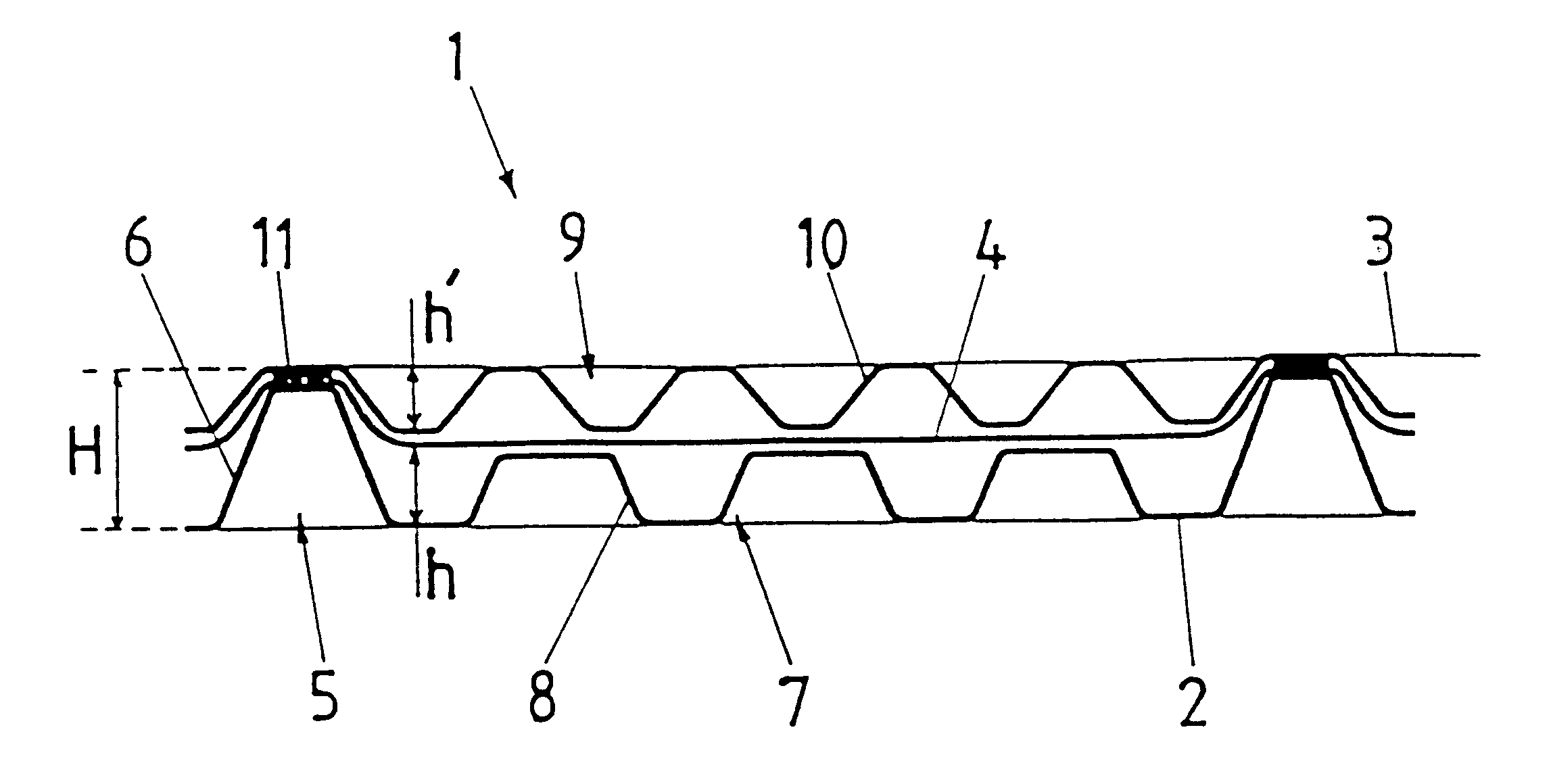Absorbent paper product of at least three plies and method of manufacture
a technology of absorbent paper and cylinder, which is applied in the field of absorbent paper products of at least three cylinders and the field of manufacture, can solve the problems of comparatively coarse embossing entails mediocre softness, comparatively complex structure requires several gluing stages, and rapid wear of embossing cylinders
- Summary
- Abstract
- Description
- Claims
- Application Information
AI Technical Summary
Benefits of technology
Problems solved by technology
Method used
Image
Examples
Embodiment Construction
As regards FIG. 1, the product 1 of the invention is an absorbent paper product of a specific surface weight of about 36 to 105 g / m.sup.2 and includes at least three plies 2, 3 or 4, a central ply 4 and two embossed outer plies, namely a lower one 2 and an upper one 3 each fitted with patterns 5, 7 and 9 at least in part composed of discrete protrusions 6, 8 and 10. The protrusions face the central ply 4. The plies 2, 3 and 4 are combined by joining the distal areas of at least part of the protrusions 6 of the ply 2 and of at least part of the surfaces situated between two protrusions 10 of the ply 3 to the central ply 4. At least one of the outer plies 2 and 3 is fitted with a pattern density larger than 30 protrusions / cm.sup.2 in patterns 5, 7 and 9. The embossed lower outer ply 2 includes combined high and low patterns 5 and 7 respectively. In one feature of the invention, the central ply 4 and the embossed upper ply 3 are joined in a nested mode at the level of at least part of ...
PUM
| Property | Measurement | Unit |
|---|---|---|
| thickness | aaaaa | aaaaa |
| thickness | aaaaa | aaaaa |
| height | aaaaa | aaaaa |
Abstract
Description
Claims
Application Information
 Login to View More
Login to View More - R&D
- Intellectual Property
- Life Sciences
- Materials
- Tech Scout
- Unparalleled Data Quality
- Higher Quality Content
- 60% Fewer Hallucinations
Browse by: Latest US Patents, China's latest patents, Technical Efficacy Thesaurus, Application Domain, Technology Topic, Popular Technical Reports.
© 2025 PatSnap. All rights reserved.Legal|Privacy policy|Modern Slavery Act Transparency Statement|Sitemap|About US| Contact US: help@patsnap.com


